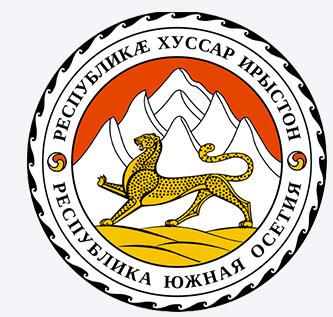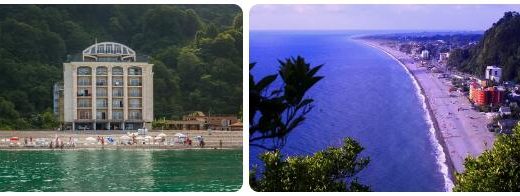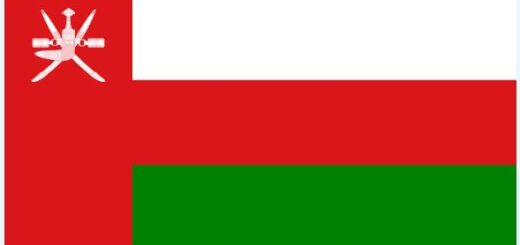South Ossetia State Facts
| THE CAPITAL | Tskhinvali |
| STATE STRUCTURE | Presidential republic |
| INTERNAL DIVISION | In the republic, only two settlements have the status of a city – Tskhinval and Kvaisa. Three settlements have the status of urban-type settlements – Dzau, Znaur and Leningor. All other settlements have the status of villages. |
| SQUARE | 3900 km² |
| CLIMATE | The climate here varies depending on the height of the mountain belt. From the dry steppe it passes to the high-altitude climate of eternal snows and glaciers. |
| OFFICIAL LANGUAGE | Ossetian, Russian, Georgian languages |
| CURRENCY | Russian ruble |
| POPULATION | 53.5 thousand |
| NATIONAL COMPOSITION | Ossetians (89.94%), Georgians (7.41%), Russians (1.14%) |
| RELIGION | Most of the inhabitants are Orthodox Christians. Muslims also live in the republic. In addition, traditional beliefs in the spirits of ancestors and nature are strong here. |
| TIMEZONE | UTC +3 / MSK +0 |
| TELEPHONE CODE | +7 9971 |
State flag
The flag of South Ossetia is a rectangular panel with three equal stripes: white – on top, red – in the middle and yellow – below. The appearance of the state flag of South Ossetia is prescribed in the constitution adopted on November 26, 1990, and confirmed by the law on the state flag on March 30, 1992.
The white color of the flag represents moral and spiritual purity; red color – courage, strength and honor; yellow – abundance, wealth and prosperity.
The flag of the Republic of North Ossetia – Alania is identical to the flag of the Republic of South Ossetia (on November 24, 1994, the Supreme Council of the Republic of North Ossetia – Alania, by its Decree No. 522, adopted the Law of the Republic of North Ossetia – Alania “On the State Flag of the Republic of North Ossetia – Alania”, which established the current flag of the Republic North Ossetia).
National emblem
The State Emblem of South Ossetia is a round red shield. The shield depicts a yellow Caucasian leopard against the backdrop of the silvery mountains of the Caucasus. The name of the country is written around the shield in two languages: in Ossetian: “Republicæ Khussar Iryston” above and in Russian: “Republic of South Ossetia” below. The colors of the coat of arms – white, red and yellow correspond to the colors of the flag of South Ossetia.
South Ossetia
The ancestors of modern Ossetians were called at different times among different peoples Alans, Ases, Yases, Ovs.
South Ossetia is located in Transcaucasia (South Caucasus), on the border of the mainland of Southwest Asia and Eastern Europe. The country borders on Russia and Georgia.
Almost 90% of the territory of the mountainous republic is located at an altitude of more than 1000 meters above sea level, and this is a zone of seismic activity. The peak of Halac is the highest – 3938 meters.
The climate here varies depending on the height of the area – from dry steppe to high mountain, with snow and glaciers. The main Caucasian ridge protects the territory of South Ossetia from cold winds from the north.
The local nature is very beautiful and diverse – broad-leaved forests are replaced by juniper thickets, followed by lush alpine meadows. Among large animals there are bears, wolves, saigas, roe deer; among the small ones – ground squirrels, jerboas, gerbil mice and many others.
Archaeological excavations have shown that the first people on the territory of modern South Ossetia appeared in the Stone Age. Ossetians as a people are descendants of the Scythian-Sarmatian tribes. At one time, Nicholas Roerich wrote about the Ossetian people, implying their antiquity: “Ossetians should be happy, measuring their glorious roots.”
In the 9th-12th centuries, the state of Alania existed in the North Caucasus, which is mentioned in the written sources of Byzantium and many other countries of that time. At the same time, according to the Byzantine rating, the status of Alania was higher than that of the Khazar Khaganate and Kievan Rus.
An interesting fact: Historians agree that the first wife of the Prince of Vladimir-Suzdal Russia Vsevolod Yuryevich the Big Nest was precisely Yasskaya Princess Maria Shvarovna. She bore the prince 12 children, including 8 sons. One of them, Yaroslav Vsevolodovich, became the father of Alexander Nevsky.
A prosperous and stable state fell into decline in the 13th century – from the invasion of Batu Khan, and a century later Tamerlane came here with military campaigns. At the end of the 14th century, Ossetians left the land of their ancestors and moved to the high mountain gorges of the Caucasus, and then began to settle on the slopes of the South Caucasus. At the beginning of the 19th century, the Alans, together with the Georgians, joined the family of peoples of the Russian Empire.
In 1918, after the revolutionary events in Russia, the Georgian Democratic Republic was proclaimed, which included South Ossetia. In the same year, the peasants rebelled against the oppression, but their detachments were forced to retreat to the territory of North Ossetia. In 1921, the Georgian Democratic Republic fell a year later, Soviet power was established on its territory. Despite the desire of the people of North and South Ossetia to unite these territories, Joseph Stalin decided to leave their disunity.
As a result, South Ossetia became part of the Georgian SSR as an autonomous region.
Relations between the republican administration in Tbilisi and the regional administration in Tskhinvali were not easy, in November 1989 South Ossetia received the status of an autonomous republic, but further historical events were very dramatic – up to the armed confrontation. In 1992, South Ossetia declared its independence, which was recognized by only a few states.
Almost 90% of the local population is Ossetian, but there are also Georgians, Russians, Armenians and Jews. The main part of the inhabitants profess Orthodoxy, there are adherents of Islam, as well as those who have preserved traditional beliefs – in the spirits of ancestors and nature.
The Ossetian language belongs to the Indo-European languages. A huge contribution to the study of the Ossetian people was made by the scientist and traveler, a German in the Russian service, Peter Simon Pallas (XVIII century). He discovered the similarity of the Ossetian language not only with Old Persian, but also with Slavic and German. And in the 20th century, the French linguist, mythologist and philologist Georges Dumézil showed the world the similarity of the epic of the Ossetians and the ancient Celts.
The founder of modern Ossetian literature is Kosta Khetagurov, a poet, publicist and painter of the 19th century. The Ossetian people also gave the world of science and culture a scientist-philologist, Iranian linguist Vasily Ivanovich Abaev (1900-2001). Another Ossetian – Grigory Alexandrovich Tokaev (1913-2003) – left a mark in astronautics. The world famous conductor Valery Gergiev is also an Ossetian.
More than 50 schools operate in the republic’s secondary education system, most of which were built during the Soviet Union. Health care in South Ossetia is going through difficult times – it lacks new medical equipment and specialists.
Ossetian cuisine is more than one hundred years old. Formed under the influence of the nomadic way of life of the Alans, it absorbed both Russian and European culinary traditions. The basis of national dishes is meat cooked in a cauldron and pies with various fillings, which are popular not only in the Caucasus, but also far beyond its borders.
Ossetian beer has a special, one might say, sacred meaning for local residents. According to the Nart epic, it was invented by the legendary beauty Shatana. By tradition, any Ossetian feast begins with a prayer, which, with a cup of Ossetian beer in his hands, is said by the oldest of the clan. At the end of the prayer, the youngest comes up to him and, having broken off a piece of the Ossetian pie, eats it, washing it down with beer from the hands of the eldest. After that, the cup is passed around until it is returned to the hands of the elder, who finishes the beer.
From South Ossetia, as a souvenir or as a gift, you can bring souvenirs made of wood, ceramics, national clothes or paintings by local artists, in which snow-capped peaks and stormy mountain rivers are depicted in all their splendor.
South Ossetia is very attractive for climbers and fishermen. A lot of impressions after staying here will remain with history buffs. On the territory of the country there are one and a half thousand historical monuments, the oldest of which dates back to the 4th century. The beautiful nature and hospitality of Ossetians can more than compensate for the lack of five-star hotels. In the republic, hydrotherapy sanatoriums Nagutni, K’odibyn and Lese provide their services. You can also rent a room from local residents.
The holiday calendar of South Ossetia includes nine dates. Among them, Defender of the Fatherland Day – February 23, International Women’s Day – March 8, Victory Day – May 9, Russia Day – June 12, Independence Day of South Ossetia – September 20.




